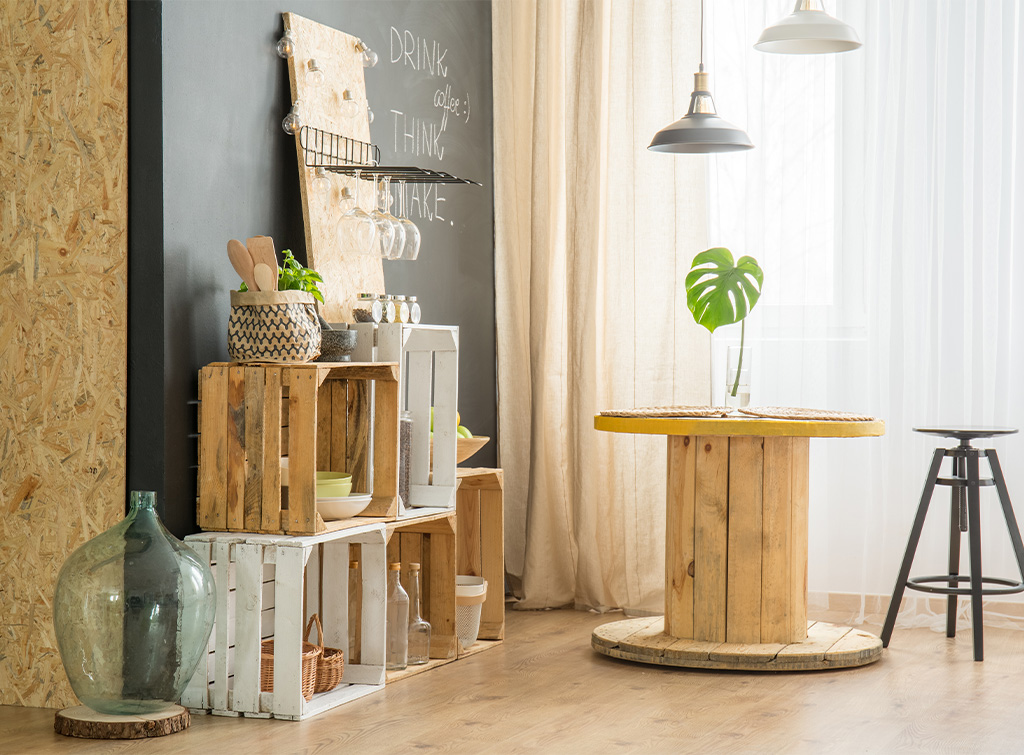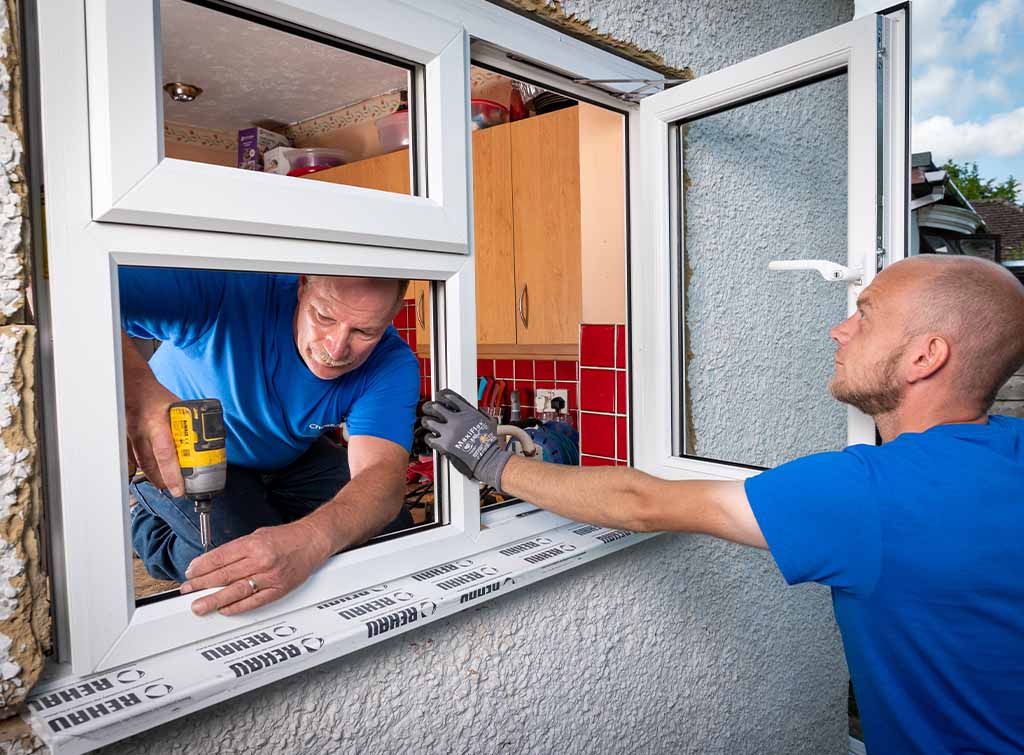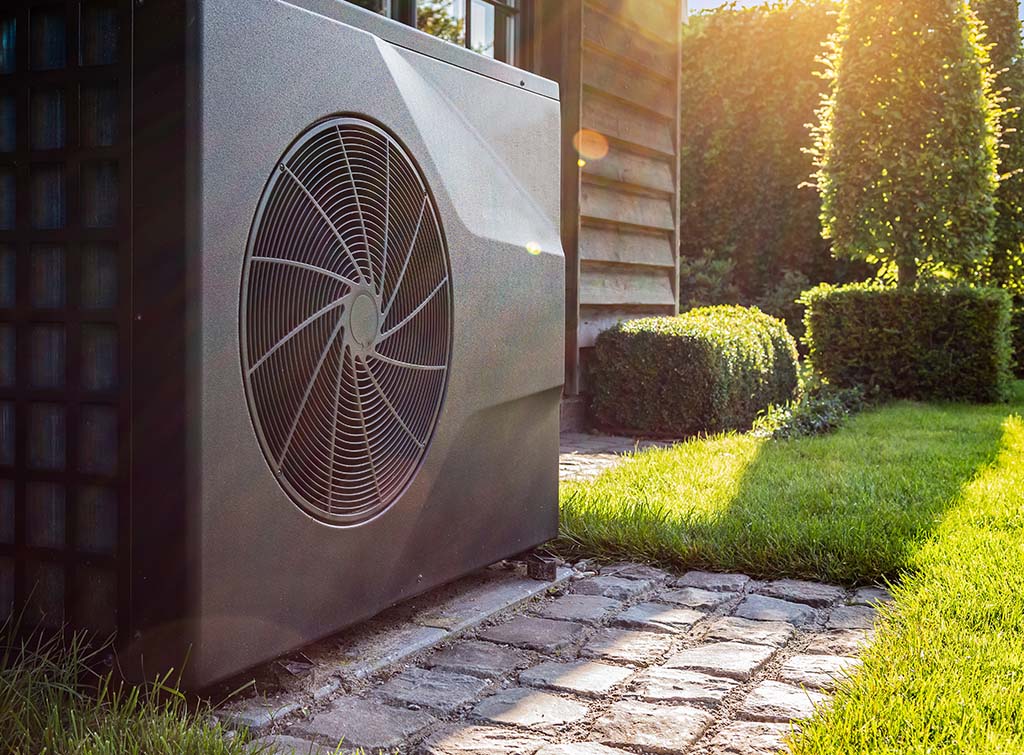Blog>Expert Advice>How to make an old home energy efficient
Last updated: 4 July 2025
How to make an old home energy efficient
Do you live in an old house? Was it built in the early 20th or even the 19th century? If so, it's likely not as energy efficient as it could be. Here are several effective ways to improve your home's energy efficiency and reduce your energy bills.

There are several reasons to want to improve the energy efficiency of an old home:
Increased home comfort (eliminating cold draughts)
Reduced energy bills (due to greater efficiency)
Increased property value (on average, by up to 14% according to the Department of Energy and Climate Change)
With fluctuating energy prices, it's more important than ever to reduce your household energy usage, in turn, helping to reduce your energy bills.
Luckily, there are various ways to make an old home energy efficient. From green home upgrades such as insulation, low carbon heating, and double glazing to smart technology and simple home hacks.
We'll guide you through the options, including the average costs and potential savings of each, highlighting available green home grants too. Let's take a look.
See the tradespeople we've checked and recommend for your job
Install insulation
Insulating your house is the first step to making an old home energy efficient and can be done via the walls, roof/loft, and floor.
A well-insulated house will retain heat during those cold winter days, meaning you can stay toasty in your home without using as much energy.
Wall insulation
Older homes, especially those built before 1920, often have solid brick or stone walls that allow heat to escape
Homes built between 1920-1990 may have uninsulated cavity walls, leading to significant heat loss
How can you better insulate old walls?
If you have solid walls, they can be insulated internally or externally.
Internal wall insulation is normally cheaper than external wall insulation but it will slightly reduce the size of your rooms. On the plus side, internal wall insulation won't alter the external appearance of your home.
External wall insulation: A layer of insulation is fixed to the outside of your external wall. Normally, this is done using mechanical fixings and adhesive before covering it with protective layers of render or cladding
Internal wall insulation: Insulating internally involves fixing a layer of insulation to the inside of your external wall. Timber studs are attached to the wall with a strip of damp-proof membrane to separate the two layers. A layer of insulated plasterboard is then fixed to the battens, and the surface can be finished with plaster
If you have cavity walls, they can be insulated by injecting an insulation material into the gap in between your walls.
Cavity walls are essentially made up of two walls with a gap between them. This makes them quick and easy to insulate — and much cheaper than insulating solid walls. Usually, this is achieved using a method known as ‘cavity wall insulation'.
Cavity wall insulation is installed by drilling small holes into the exterior property wall
Insulating material such as mineral wool, polyurethane foam, or polystyrene beads is then injected into the holes to fill the cavity before the hole is cemented shut
NB. Always consult with a checked cavity wall insulation contractor in the first instance to ensure your home is suitable for this particular type of insulation.
How much does wall insulation cost?
External wall insulation costs between £8,000 - £25,000 (depending on the size of the property)
Internal wall insulation costs typically range from £8,000 - £10,000
The cost of cavity wall insulation is around £950 - £4,600
How much could you save with wall insulation?
According to the Energy Saving Trust, installing solid wall insulation could save you between £150 and £550 per year on your energy bills
Cavity wall insulation could save you between £160 - £470 on your annual energy bills
These costs and savings are ballpark figures and represent the typical range in average costs based on the size of the property.
Contact an insulation installer for an accurate quote, and for help and advice selecting the best insulation option for your property and budget.
Roof or loft insulation
The Energy Saving Trust states that a quarter of heat is lost through the roof in an uninsulated home.
A well-insulated loft is therefore key to reducing your home's heat loss and energy bills.
How can you insulate your roof and loft?
Many different types of loft insulation could help you make an old home energy-efficient. These include:
Blanket loft insulation: Blanket insulation is a roll of insulating material such as fibreglass, mineral fibre, or sheep’s wool. It’s very easy to install
Loose-fill loft insulation: Loose-fill insulation is commonly made from cork granules, mineral wool, and cellulose fibre and is great for ensuring an entire area is covered
Sheet loft insulation: Sheet insulation is used on the sloping sides of roofs, which makes it a good option for loft conversions
Spray foam insulation: Spray foam is a liquid insulating material that’s sprayed into place. Just be aware that some mortgage lenders will refuse to lend for houses that have spray foam insulation as it can restrict the air circulation in the loft and lead to condensation. It’s also less suitable for draughty lofts, so often not the best option for older homes
What does roof and loft insulation cost?
Installing quilt loft insulation could cost between £654 - £1,206 — depending on the size of your home
How much can you save with roof and loft insulation?
According to the Energy Saving Trust, adding loft insulation could help you save between £200-£380 per year on your energy bills — depending on the size of your home
Our loft insulation cost guide contains more detailed information about the type of loft insulation available and how much you can expect to pay.
Floor insulation
Finally, floor insulation. Lots of old properties have suspended timber floors — that’s a timber ground floor suspended above a ventilated sub-floor.
While this adds character to a home, floors built above unheated spaces like this can get cold quickly — allowing cold air to enter from below.
How can you insulate suspended timber floors?
Underfloor insulation material is placed between the joists under your floorboards.
Often, this will involve lifting the floorboards, which can be a delicate job as it’s easy to damage old timber in this way. However, if you have a basement or cellar, you may be able to add insulation from below instead.
How much does floor insulation cost?
Suspended timber floor insulation typically costs around £105 per m², although it could come to more if you have to replace damaged floorboards
How much could floor insulation save you?
Adding floor insulation could help to reduce your energy bills by around £70 per year
For a more detailed breakdown, take a look at our floor insulation cost guide.
See the tradespeople we've checked and recommend for your job
Replace windows and doors
According to the Government's Department of Energy and Climate Change (DECC), 18% of heat loss occurs through windows. What's more, heat is lost through single glazing around twice as fast as through standard double glazing.
Replacing your windows and doors can be expensive, however, it has several benefits:
A warmer, more comfortable home
Reduced heating bills
Noise reduction
How much does it cost to install double glazing?
On average, the cost of installing double glazing on a 3-bed house ranges from £8,000 - £15,000
If your budget allows, consider triple glazing for even better insulation and glazing
For a more affordable way to prevent heat loss through your glazing, take a look at insulation window film. The film is applied directly to window glass in order to control the heat entering and exiting your home and can have a significant impact on your home's energy efficiency
How much can you save with double glazing?
Installing double glazing is a significant cost, but it's a worthwhile investment for the energy savings and improved comfort you’ll enjoy over the long term.
According to the Energy Saving Trust, if you replaced single glazing with A++ rated double glazed windows, the savings could be up to £150 a year and 420kg of carbon dioxide
Hire right: Make sure to hire a double glazing installer registered through a Competent Person Scheme, such as FENSA, CERTASS, or BSI.
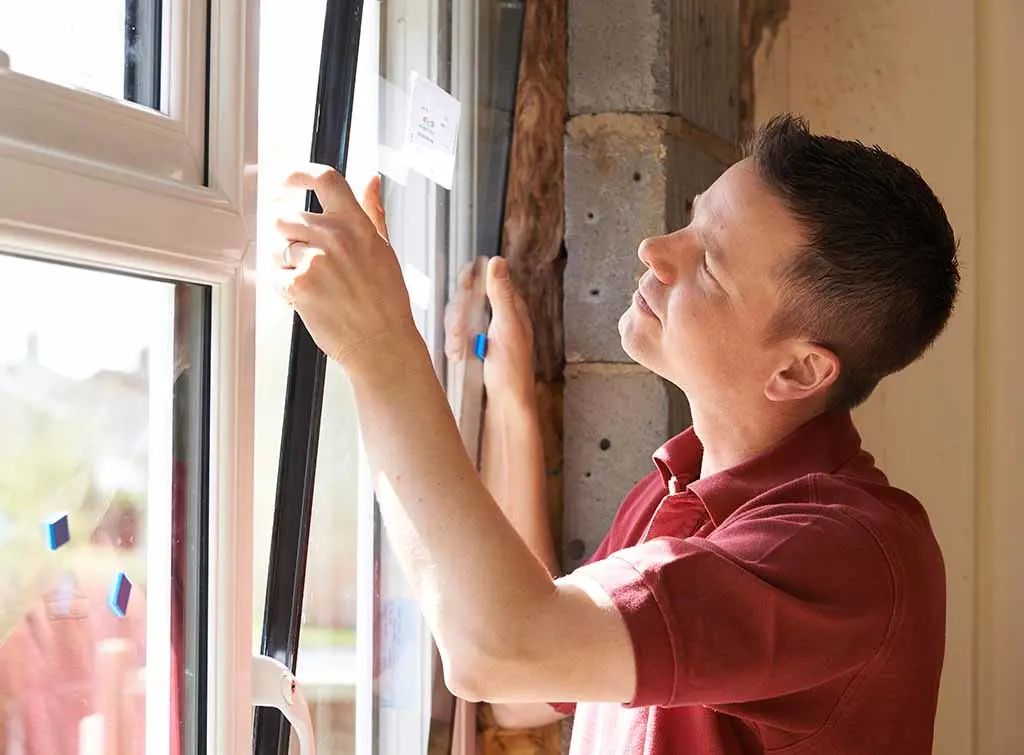
Switch to low carbon heating systems
Heating systems are responsible for as much as 20% of UK carbon emissions (Source: National Grid).
Low carbon heating systems are also known as renewable heating systems
They’re heating systems that release little or no carbon into the atmosphere — unlike traditional gas and oil boilers, which release carbon in order to heat the home
However, not only can these heating systems help to reduce your carbon emissions and future-proof your home, but they’ll also enable you to cut down on your energy bills.
After all, you’ll be generating energy from sustainable sources, such as the sun, the ground, plants, or the air, rather than from burning fossil fuels. Let's look at some of the popular low carbon heating systems.
Air source heat pumps
Air source heat pumps (ASHPs) extract heat from the air outside your home and direct it inside. The heat is then absorbed into a fluid. This passes through a heat exchanger into a heat pump which increases the temperature and transfers the heat to water.
Air source heat pumps can be used to heat the water inside radiators, underfloor heating, and water in a water cylinder. This means you’ll have the potential to more than make back the initial air source heat pump cost in the long run.
How much does an air source heat pump cost?
Several factors will affect the cost of an air source heat pump — our ASHP cost guide has more information. As a guide:
Air-to-air heat pump prices are normally around £3,000 for supply and installation
Air-to-water heat pump costs are typically more expensive, costing an average of £15,000 for supply and installation
However, you could be eligible for an air source heat pump grant...
The Boiler Upgrade Scheme (BUS) is designed to help toward the cost of replacing a fossil fuel heating system with a heat pump. You can apply for a grant of up to £7,500. Eligibility criteria apply.
How much can you save with an air source heat pump?
How much you could save depends on the type and age of heating system you're upgrading from, e.g. gas, oil, or electric, and the running costs of your new heat pump.
It's said that heat pumps are more than three times more efficient than a gas or oil boiler, which helps to lower your energy use (Energy Saving Trust).
Ground source heat pumps
Ground source heat pumps work similarly to air source heat pumps. However, instead of harnessing energy from the air, they use underground pipes to absorb heat from the ground to heat your home and hot water on demand.
How much does a ground source heat pump cost to install?
As with ASHPs, several factors will affect the cost of a ground source heat pump. However, as a guide, the average ground source heat pump installation tends to fall between £18,000 - £50,000. This includes the groundwork requirements.
Remember, you may be eligible for a grant of up to £7,500 to help with the cost of your heat pump via The Boiler Upgrade Scheme.
Our guide to ground source heat pump costs contains more detailed information.
How much could you save with a ground source heat pump?
Ground source heat pumps cost a lot to install and they do need electricity to run. However, the heat they absorb from the ground is being renewed constantly. That means they generate more energy than they use, which could save you a significant amount on your energy bills.
Savings range from around £550 per year (on average) if switching from an old, G-rated gas boiler up to around £1,200 - £2,000 per year if upgrading from electric heaters (Source: Energy Saving Trust).
Biomass boilers
A biomass boiler is similar to a gas or oil boiler. But instead of burning gas or oil, it burns a fuel such as wooden pellets, chips, or logs to provide central heating and hot water.
Although they do produce carbon, biomass boilers are sold as carbon-neutral heating systems. This is because they only release carbon that’s stored in trees when they burn, and trees can be replanted.
How much does a biomass boiler cost?
Biomass boiler costs aren’t insignificant. The cost of a biomass boiler, including installation, is typically around £19,000.
How much could a biomass boiler save you?
With the unpredictability of gas and oil prices, a biomass boiler is a valid alternative to minimise your reliance on these expensive fuel types.
See the tradespeople we've checked and recommend for your job
Look into renewable energy
We’ve looked at renewable heating systems, but what about renewable electricity such as solar and wind power?
Solar panels
Solar panels are the most popular method of renewable electricity production in UK domestic properties.
Photovoltaic (PV) panels are used to convert the sun’s UV rays into electricity. Solar thermal panels use the sun’s rays to generate energy for heating water and central heating systems
How much do solar panels cost?
The cost to install solar panels can be expensive, but the potential savings can be significant:
A 4kW photovoltaic (PV) system, suitable for a 2-3 bedroom house typically costs around £8,000 (this includes installation)
Including an inverter and solar battery takes the average cost to around £12,000
Remember, fitting solar panels can also help you to future-proof your home against rising energy costs.
How much could you save with solar panels?
As a ballpark figure, you could save around £735 per year on your energy bills (based on a 4kW system) and earn up to £360 a year selling surplus energy generated by your panels back to The National Grid.
Find out more in our guide to solar energy.
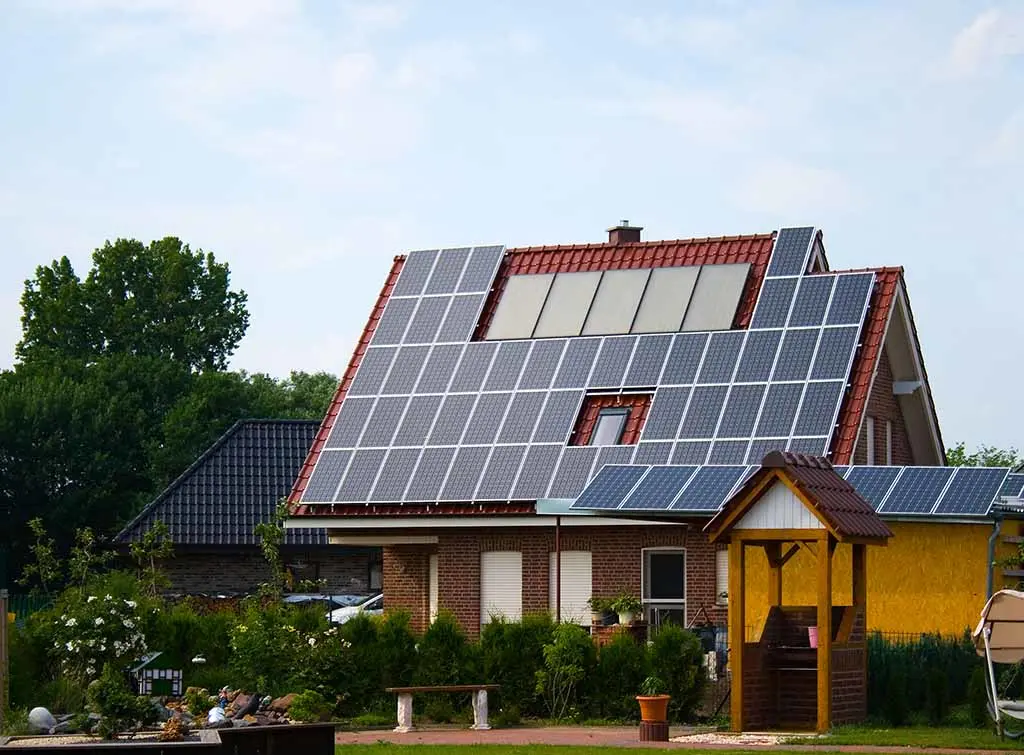
Domestic wind turbines
Domestic wind turbines could be a great way to reduce your electricity bills by harnessing the power of the wind, especially if your home is unsuitable for solar panels.
There are two main types of domestic wind turbines available: roof-mounted and freestanding.
Freestanding wind turbines are the most effective and are best if you’re thinking about going fully renewable. However, they can be expensive
Roof-mounted could be a good way in if you’re looking to reduce your wind turbine installation cost and you don’t need to produce as much electricity
How much do domestic wind turbines cost?
Depending on the type, size, and manufacturer, you could pay anywhere between £800 to £70,000 for a wind turbine.
There are also installation costs to consider. Read our wind turbine cost guide for a full breakdown, alongside the potential energy savings you could experience.
See the tradespeople we've checked and recommend for your job
Financial support for energy-efficient home improvements
The government has lots of commitments to uphold in terms of helping to reduce climate change. So, they want to encourage you to make your home more energy efficient to help them reach their goals. That means you might be able to get financial support to make your old home energy efficient.
The Energy Company Obligations (ECO) scheme
Energy suppliers that have more than 150,000 customers have to offer energy-efficient home improvements under the Energy Company Obligations (ECO) scheme. The latest iteration is ECO4 and is open until 2026.
Through ECO4, several energy-efficient upgrades are available to eligible homes, including help with the cost of insulation, heating system improvements, glazing, smart heating controls, and low-carbon heating systems.
The Boiler Upgrade Scheme (BUS)
The Boiler Upgrade Scheme (BUS) helps with the cost of swapping your fossil fuel heating system for a heat pump or biomass boiler with grants available up to £7,500.
You can’t apply to the scheme directly — instead, you’ll need to find an MSC-certified installer to carry out the work, and they’ll apply to Ofgem for you.
The Green Deal
The Green Deal is a government loan that helps you to make energy-saving improvements to your home. You might be able to get a Green Deal loan to help pay for things such as:
Heating
Draught-proofing
Solar panels
Heat pumps
Double glazing
Insulation
Just remember that this is a loan, not a grant, so you’ll need to pay it back.
Smart technology
Smart technology uses a variety of sensors to improve your home’s thermal performance. Some practical smart technologies include:
Smart thermostats are connected to your phone and can be operated remotely. They can be pre-programmed to heat your home when needed and set at an ambient temperature to reduce heating costs
Smart light bulbs work in a similar way to Smart thermostats. They can be controlled remotely, programmed to come on and off at set times, and dimmed to save energy
Smart appliances interact directly with your phone. Your Smart fridge or washing machine can send notifications to your phone to tell you if a problem has occurred or to suggest the best time to use your appliance to benefit from off-peak rates
Smart devices are revolutionising the way we interact with our homes. They are helping homeowners to cut costs by improving energy efficiency
Simple home hacks to make your home more energy-efficient
Most of the energy-saving methods mentioned so far will need to be installed by a checked tradesperson.
There are, however, several ways that you can help to improve your home’s energy efficiency yourself:
Fit thicker curtains to retain heat
Use draught excludes on doors and windows
Turn your thermostat down slightly to save energy
Unplug appliances at night
Take shorter showers
Use LED or energy-saving light bulbs
Leave the oven door open after cooking to generate heat
Always use the ECO setting on your dishwasher
Turn lights and taps off when not in use
These may seem like small things. However, when you do them regularly and they become part of your routine, you can make noticeable savings on your heating bills and help make your old home more energy efficient.
See the tradespeople we've checked and recommend for your job
FAQs
Why are old homes less energy efficient?
Lack of wall insulation, gaps in floorboards, and single-glazed windows are the main reasons why old homes are less energy efficient.
How can I tell if my house is well-insulated?
The best way to gauge the insulation of your house is to check how well it retains heat. If your home quickly goes cold when the heating’s turned off, it’s not as well insulated as it should be.
What temperature should your house be?
According to the Energy Saving Trust, between 18-21 degrees Celsius is the perfect ambient temperature for a home’s interior.
See the tradespeople we've checked and recommend for your job
More Expert Advice Articles
See the tradespeople we've checked and recommend for your job



